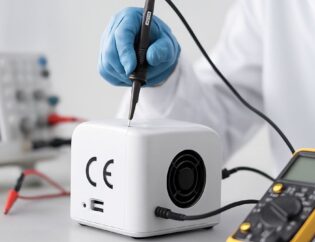
Common Mistakes Made When Obtaining a CE Certificate and Suggested Solutions
The CE certificate is a conformity document required for products to circulate freely in the European Union (EU) market. However, mistakes made during the process can lead to both time and cost losses. In this article, we discuss the most common mistakes encountered when obtaining a CE certificate and how to avoid them.
1. Incorrect Selection of Directive or Standard
Determining the correct directives and standards for a product is one of the first and most critical steps in the process. Choosing the wrong directive can cause the process to proceed incorrectly from the start.
Solution: The applicable regulations for the product must be accurately identified. Relevant EU directives and harmonized standards should be carefully reviewed.
2. Incomplete or Incorrect Preparation of the Technical File
The technical file is one of the most important parts of the CE certificate. Incomplete or improperly prepared documents can lead to the rejection of the product.
Solution: The technical file must comprehensively include documents such as risk analyses, test reports, user manuals, and the declaration of conformity.
3. Inadequate Testing Processes
Failure to carry out all necessary tests for the product or working with inappropriate laboratories can lead to invalid results.
Solution: Tests must be conducted within the scope defined in the relevant regulations and performed in accredited laboratories.
4. Errors in Preparing the Declaration of Conformity
In order to use the CE mark, the Declaration of Conformity must be properly prepared. An incomplete or incorrect declaration can cause legal issues.
Solution: The Declaration of Conformity must include all applicable directives and the standards that have been implemented.
5. Outdated Documentation
Standards and regulations are regularly updated. Documentation based on outdated versions can result in the product being deemed non-compliant.
Solution: The most current standards and legislation should be followed, and documents should be updated accordingly.
6. Incorrect Selection of Notified Body
For certain product groups, working with a Notified Body is mandatory. Choosing the wrong one can delay or result in the rejection of the process.
Solution: It must be ensured that the selected Notified Body's scope covers the directives applicable to the product.
7. Insufficient Staff Knowledge and Experience
Lack of knowledge about regulations and technical matters among the team involved in the CE certification process can cause disruptions.
Solution: It is important to raise awareness among staff within the organization through training on CE certification and technical requirements.
Mistakes made during the CE certification process can increase costs and delay the product's market entry. Therefore, it is critical at every stage to identify the correct directives and standards, prepare the technical file completely, and conduct appropriate testing.
With the right approach, the CE certification process can be completed more quickly, reliably, and smoothly.









